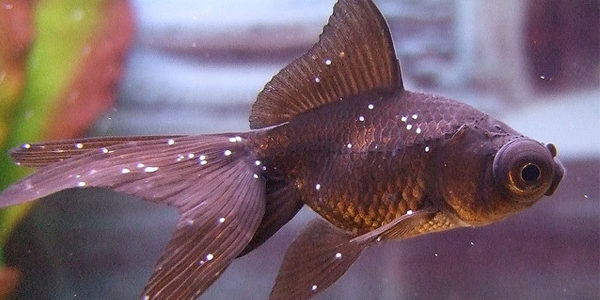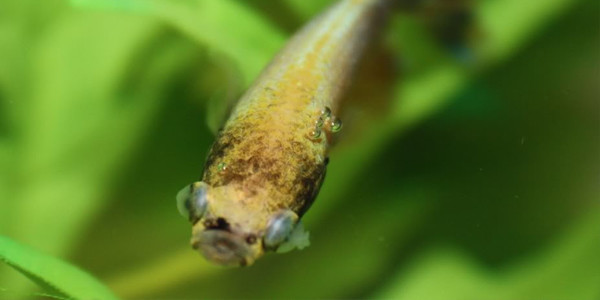Fish are susceptible to disease like any other pets and when it comes to fish diseases, the key word is prevention.
In this post, I’m going to share more on fish diseases and what you can do now to prevent your fishes from infecting any diseases.

Table of Contents
Type of Fish Diseases
There are numerous diseases that are mainly categorized into three types:
- parasitic diseases
- bacterial diseases
- fungal diseases
Sometimes even viral diseases are known to happen.
Parasitic Diseases
Parasitic diseases are caused by parasites; the fish experiences visible white spots, excess mucus, inactivity, loss of appetite, continuous scratching against objects or the glass of the aquarium, rapid breathing, and gasping for air at the surface.
Bacterial Diseases
Bacterial diseases in fish include symptoms such as fin, tail, and mouth rot, bloated belly, bulging eyes, loss of appetite, difficulty swimming, weight loss, color fading, and open sores.
Fungal Diseases
Fungal diseases usually occur when bacterial or parasitic infections are active or they can appear randomly.
Fungus feeds on the fish itself and it is noticeable by white cotton-like growths on the skin, mouth, or fins.
Best Remedy for Diseases
The best remedy is prevention and when it comes to prevention there are many factors to watch for:
- Water quality
- Stress factor
- Good nutrition
- Action
Water quality
The quality of the water is one of the most important factors when it comes to disease prevention.
All water parameters should be checked regularly and an equipment check is also required to make sure everything is working properly.
Provide the fish with the temperature, pH, and water hardness as its natural habitat for paramount health.
A well-cycled aquarium with low nitrite levels and good aeration is vital for healthy and happy fish.
Stress factor
Fish get stressed easily when the water parameters are not suitable for them or when they are introduced to a new aquarium, which can lead to bullying by other fish.
In addition, when fish are stressed, their immune system weakens and they become susceptible to disease.
Good nutrition
Quality food is always a must for healthy fish.
Be sure to research the dietary needs of each of your fish to provide proper nutrition.
Acting quickly
There are commercial treatments available, but once a fish is infected it is laborious to cure it.
Most often fish die when not treated promptly or if there is no treatment at all.
There are also home remedies that include chemicals and/or salt that may help, but check with a professional first.
When the fish becomes infected, the most important thing is to act quickly and quarantine the fish.
Also, check the other fish and depending on the type of the disease, conduct a thorough cleaning, water change, and treatment application in the tank to prevent other fish from becoming infected.
Sometimes almost all fish become infected therefore; the whole fish tank needs to be treated with remedies if available.

Common Fish Diseases
Most common diseases among aquarium fish are:
Ichthyophthirius
Ich or Ick (short for Ichthyophthirius) is caused by the Ichthyophthirius multifiliis parasite.
The most common sign is white dots on the body of the fish and can be treated with commercial remedies and raising the water temperature.
Dropsy
Dropsy is a bacterial disease and its symptoms include large swelling of the body and protruding scales.
It’s difficult to treat, though there are antibiotics to help, but it’s important to isolate the fish as to not infect any others.
Rotting
Rotting of the fins, tail, and body is a bacterial disease and it needs to be treated with anti-bacterial medications.
This happens more often when the fish is bullied by fin-nipping tank mates and poor water conditions.
Gill Flukes
Gill Flukes are parasitic diseases manifested by infected gills and/or skin.
The parasites are flatworms (1mm long) and they destroy the gills of the fish.
The fish is left gasping for air at the water’s surface.
There are commercial treatments for this type of disease.
Worms
Anchor worms are other parasites that can be visible on the fish or burrowed in the skin and look like tiny strings. OTC anti-parasitic treatment is recommended.
Fungal Growth
Fungal growths are noticeable white cotton-like appearances on the fish.
As the fungus feeds on the fish’s body, eventually the fish will die if left untreated.
Gill Mites
Gill mites are parasites that effect the gills making them red and partially open.
The fish is left gasping for air at the surface.
Commercial anti-parasitic treatments are available.
Malawi Bloat
Malawi bloat is a disease or condition that occurs mostly in Malawi cichlids or other fish and is similar to dropsy.
The fish becomes bloated and the treatment consists of giving the fish a high fiber diet like spirulina algae.
The Importance of Quarantine
Sometimes wild fish can spread diseases to aquarium fish so be sure to know if they can be combined in the same tank.
Also, it is very important when you buy fish from a pet store to look at the aquarium conditions.
Do not make a purchase if you notice poor water conditions or the fish already show symptoms of any disease.
When you bring the fish home, put it into the tank while still in the plastic bag to assimilate the tank temperature with the water in the bag.
Then open the bag and pour some water from your tank into the plastic bag and wait about 10 to 15 minutes for the fish to adapt before adding more water into the plastic bag.
Then extract the fish from the bag with a fish net and introduce it to your aquarium.
Do not put the water from the plastic bag from the store into your tank to avoid spreading diseases.
A good aquarist inspects his or her tank and fish daily for any issues.
As long as you are doing this, problems will be caught immediately and can be solved swiftly.
Share your thoughts
I hope you’ve gotten some useful information about fish diseases from this post.
I would love to hear your thoughts on them and you could do it by simply leave a comment below.

2 thoughts on “How to Keep Your Fish Free from Disease – Best Remedies”
Hello, my Blood Parrot has a black spot on its nose. Don’t know what it is. Thought maybe it rubbed against algae on the lava rock. Only other fish is a Pleco. Any ideas? Thank you.
My amazon puffer fish are swimming in a spazz like state and one had a clear thick poop with brown spots. Is this a parasite?